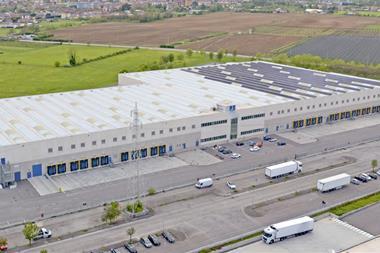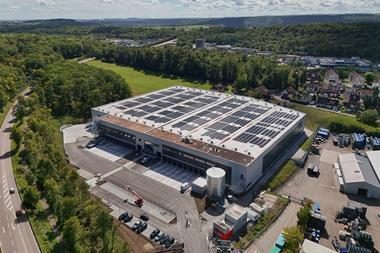Asset owners, such as pension funds and sovereign wealth funds, achieved the strongest risk-adjusted returns among a broader universe of institutional infrastructure investors in 2021, with North American pension funds outperforming the most, according to analysis by EDHECinfra and Boston Consulting Group (BCG).
Last year, a group of 79 assets owners generated higher returns (10.86%) with lower volatility (Sharpe ratio of 1.1) than 280 asset managers, which collectively returned 8.44% with a Sharpe ratio of 0.9, the report found.
Among asset owners, North American pension funds generated the strongest risk-adjusted returns, returning 14.36% with a Sharpe ratio of 1.44, followed by sovereign wealth funds (12.33% and 1.26), superannuation funds (12.61% and 1.22), global insurers (9.8% and 0.99) and European pension funds (7.98% and 0.84).
EDHECinfra and BCG attributed the difference in average returns between asset owners and asset managers to different levels of risk appetite and exposure.
In particular, asset owners’ bias toward transportation and power assets meant they benefitted from a strong recovery in these sectors in 2021 after a COVID-19-induced downturn in 2020.
Over a three-year period, their average investment performance was actually slightly lower than asset managers, at 10.53% versus 10.67%.
Asset managers are also heavily invested in lower-risk, contracted business models where infrastructure providers have long-term revenue agreements, while asset owners appear to be less risk averse and have about 60% of their investments in merchant and regulated corporates and maintain a higher allocation to the riskier energy resources and transport sectors.
Asset managers also have a higher weighting to European investments (60% versus 50%) and a lower exposure to North America (20% versus 30%).
EDHECinfra and BGC concluded that US pension funds were the best-ranked asset owner group due to their return-seeking approach and greater exposure to merchant assets.
Sovereign wealth funds ranked second with some of the most geographically diversified portfolios and the greatest exposure to regulated assets.
Superannuation funds, which ranked third, generated most of their returns from transport investments and less from renewable power than other peer groups. Australian superannuation funds were exposed to more transport and more merchant risk and corporates than most other peer groups.
Global insurers came in fourth with a focus on Europe and the US and, like Australian and New Zealand investors, have “an unusual 50/50 exposure to projects and corporates”, the report said.
European pension funds ranked last with the lowest allocation to merchant assets and a focus on contracted transport, social and renewable projects, “adopting a distinctively more risk-averse style”.
Multi-asset fund managers outperform infrastructure-only specialists
Among the 280 asset managers covered by the research, fund management firms that invest in a broad range of asset classes outperformed infrastructure-only specialists, generating 8.74% with a Sharpe ratio of 0.93 versus 7.64% and 0.82.
The report said this difference between “pure-play and multi-asset managers echoes that between global asset managers and asset owners”, with specialist asset managers tending to invest more in contracted projects, social infrastructure and utilities, while multi-asset managers have favoured merchant and regulated assets, power and energy resources and transport.
Frederic Blanc-Brude, Director of EDHECinfra, said: “Certain investors have gained exposure to different segments of the infrastructure universe over time and each segment has performed differently.”
For instance, the report found that, despite widespread efforts by institutional investors to decrease their exposure to fossil fuels, those that still had exposure to gas and conventional power generation benefited from a recovery that was second only to transport sector.
EDHECinfra and BCG have forecast global infrastructure assets under management to reach a record high of $950bn (€863bn) this year, and argue that, as the number of infrastructure investors increases, “strategic questions grow in importance”.
These include, it said: “How should investors select their exposures to different segments of the infrastructure universe? What risks and returns can they expect, and what strategic choices can they make to develop their portfolios? What has been the experience of different investment peer groups so far? For investors, has the direct investment model delivered as well as accessing infrastructure investments via fund managers has?”

Topics
- Asia-Pacific Investors
- Asset Allocation
- Digital Infrastructure
- Energy Infrastructure
- ESG
- European Investors
- Fund Management
- Infrastructure
- Infrastructure Americas
- Infrastructure Europe
- Insurers
- Investment Strategies
- Investors
- North American Investors
- Pension Funds
- Portfolio
- Returns
- Social Infrastructure
- Sovereign Wealth Funds
- Transport






















